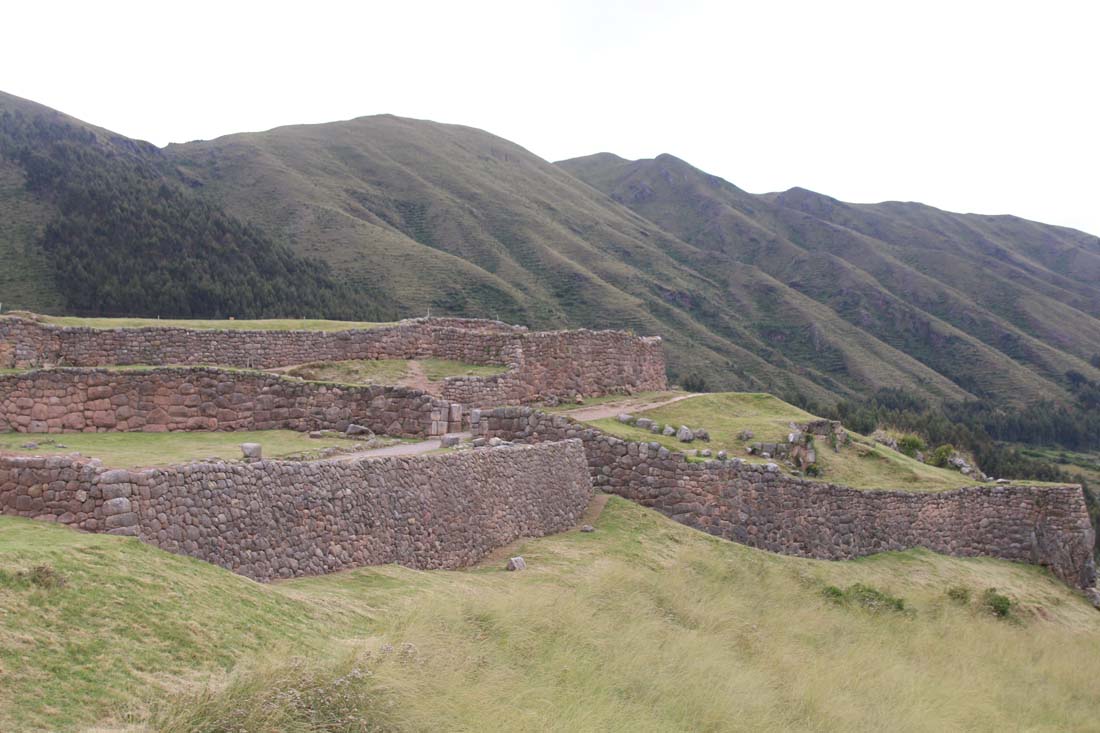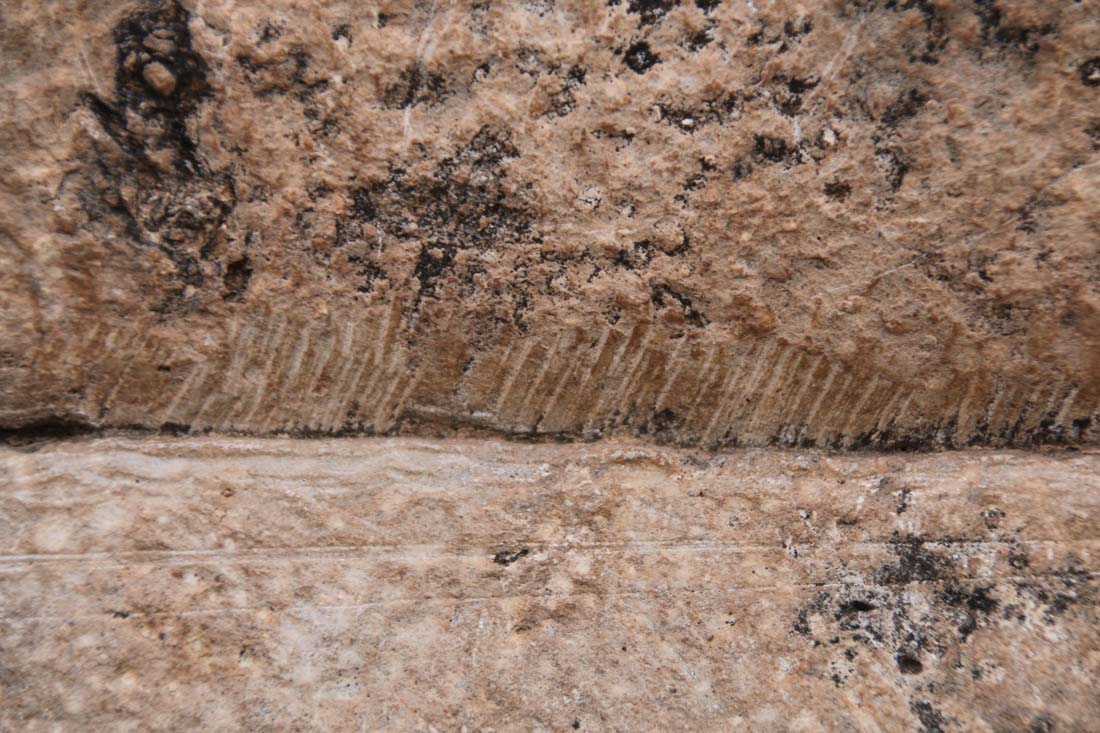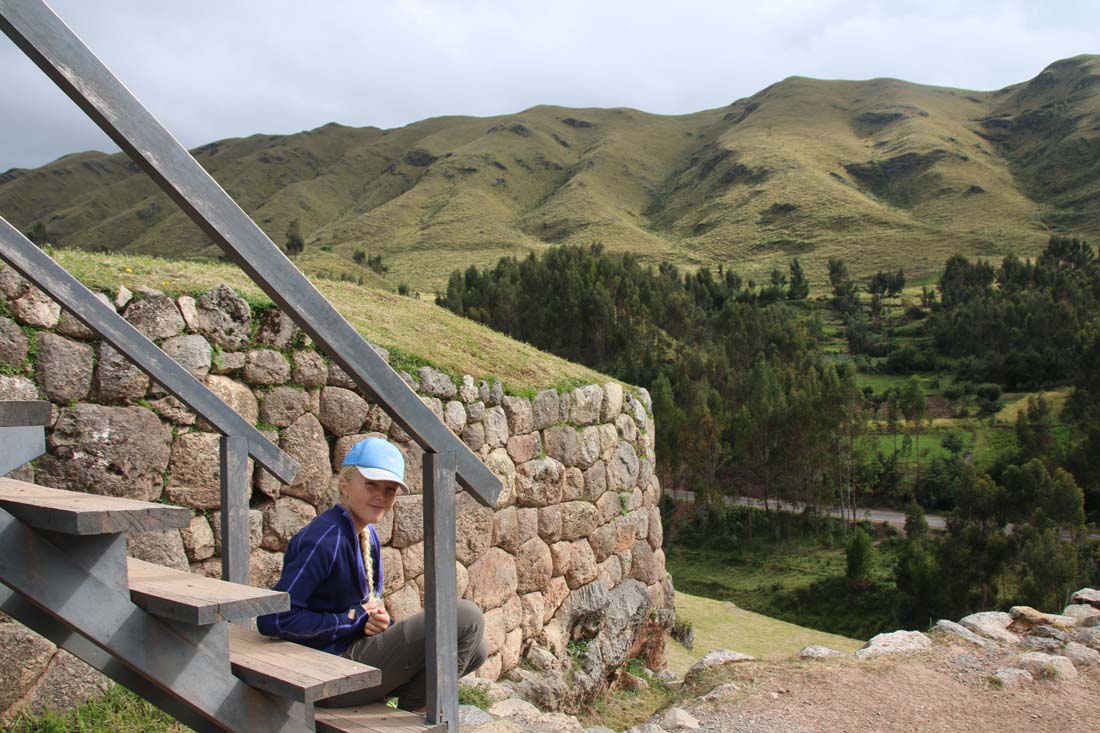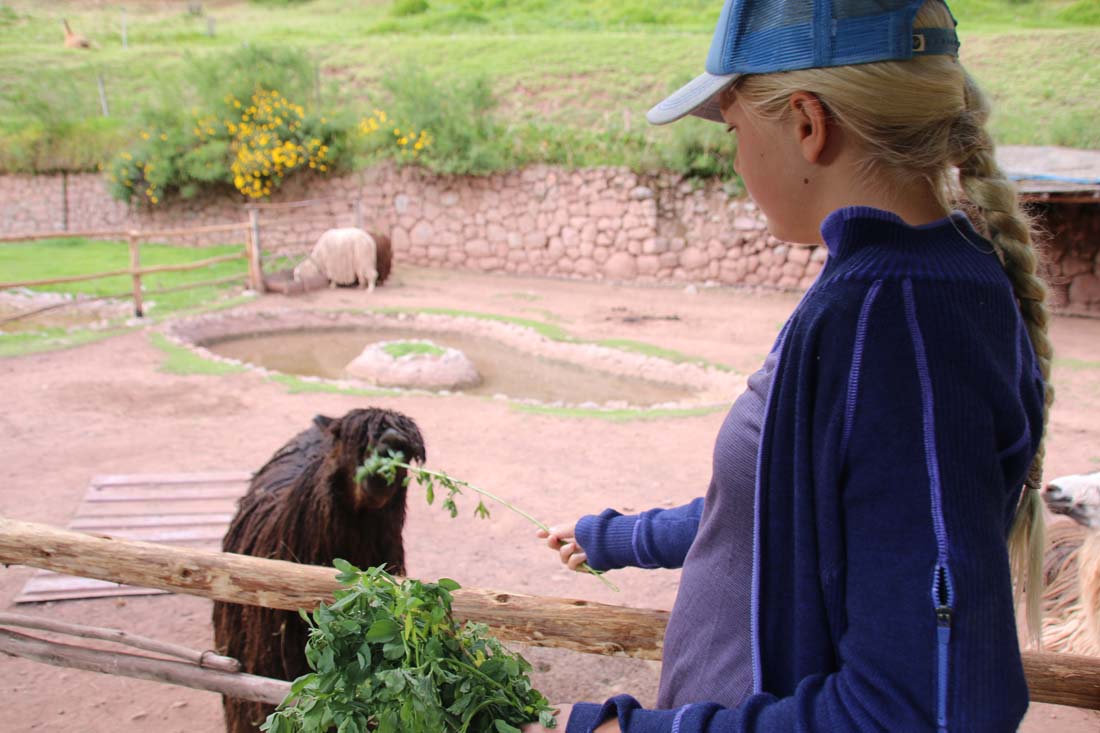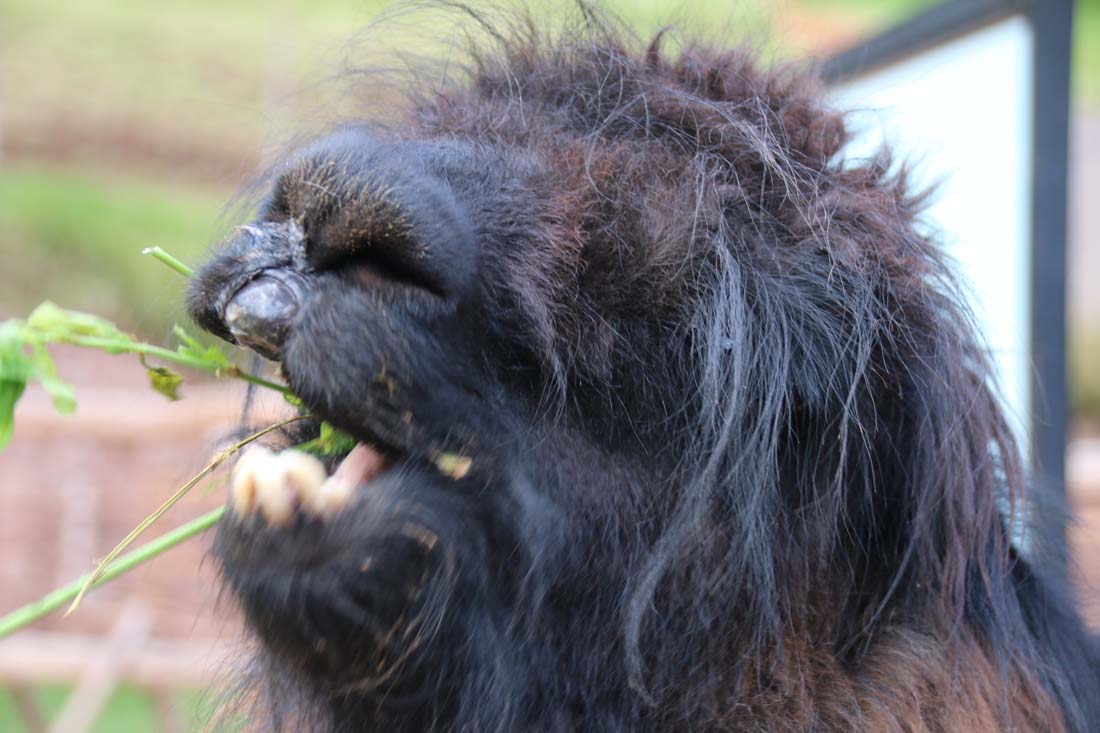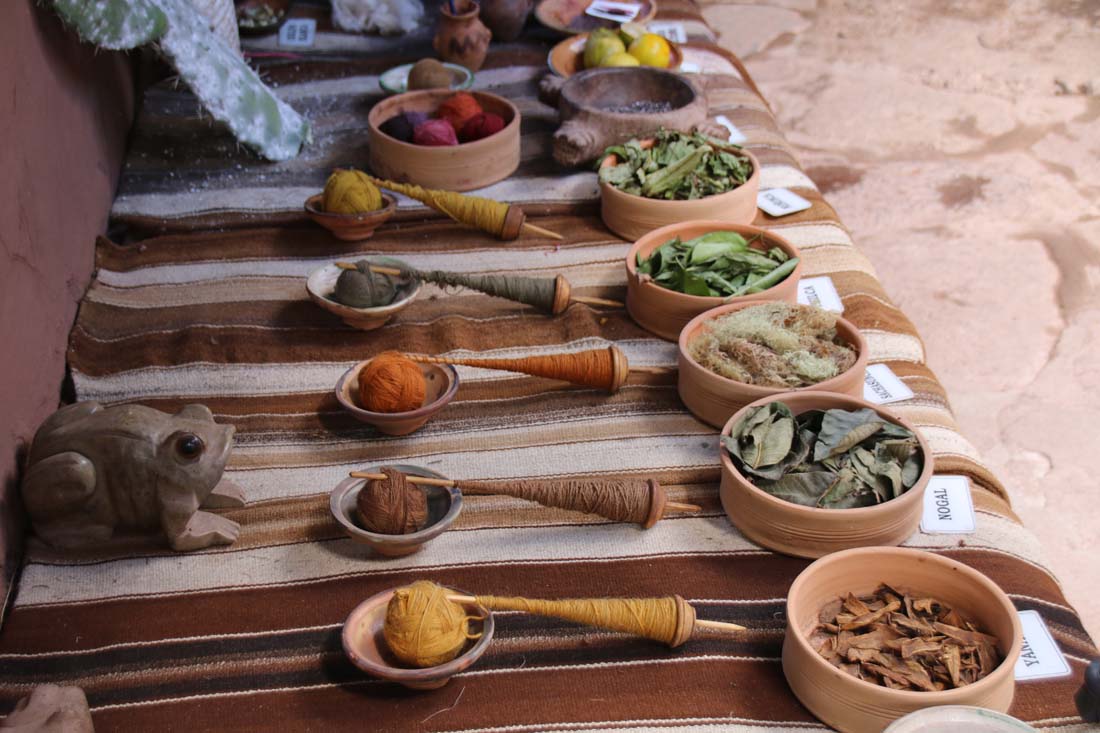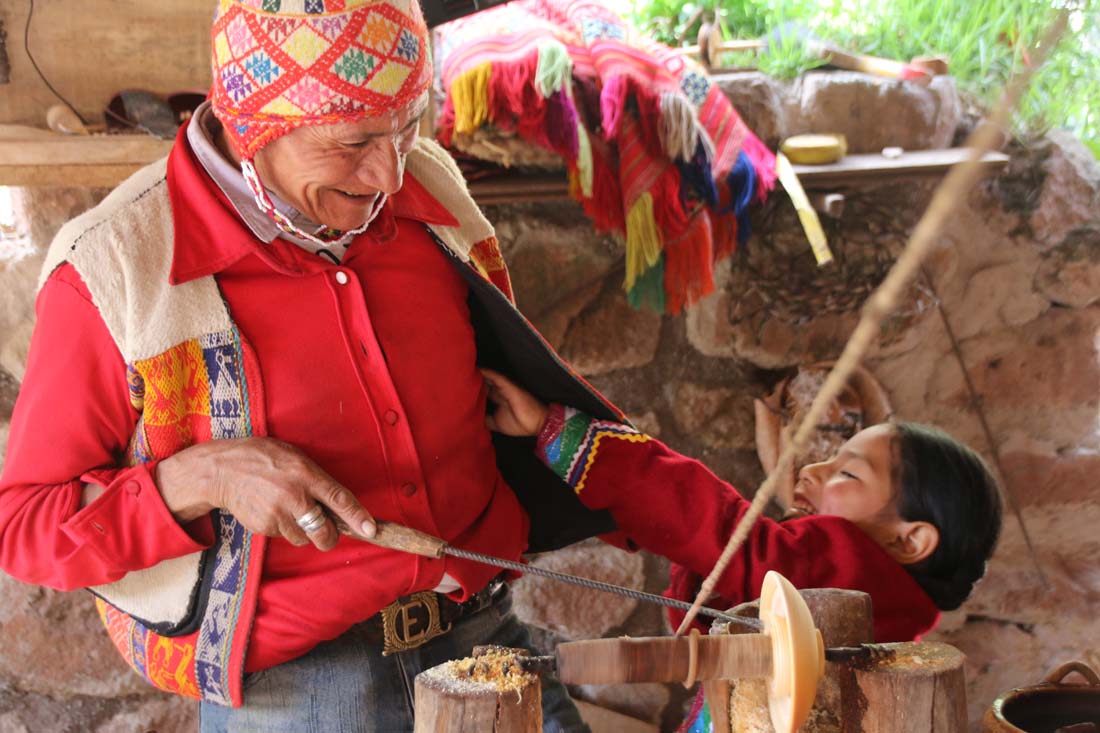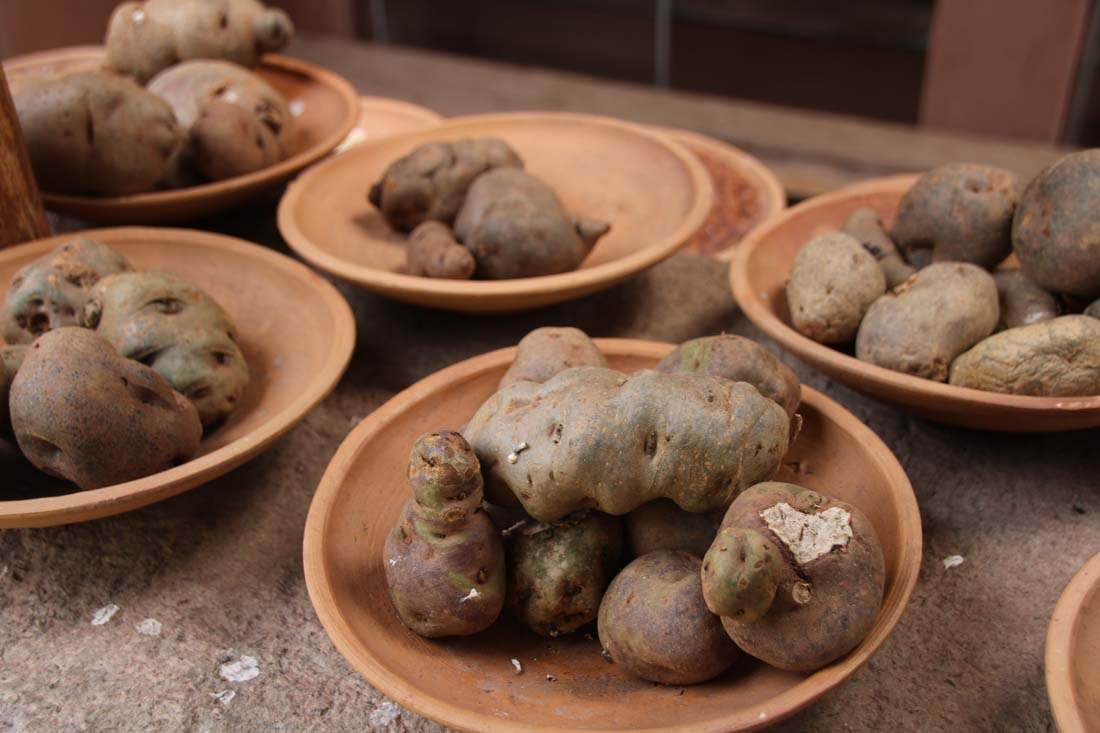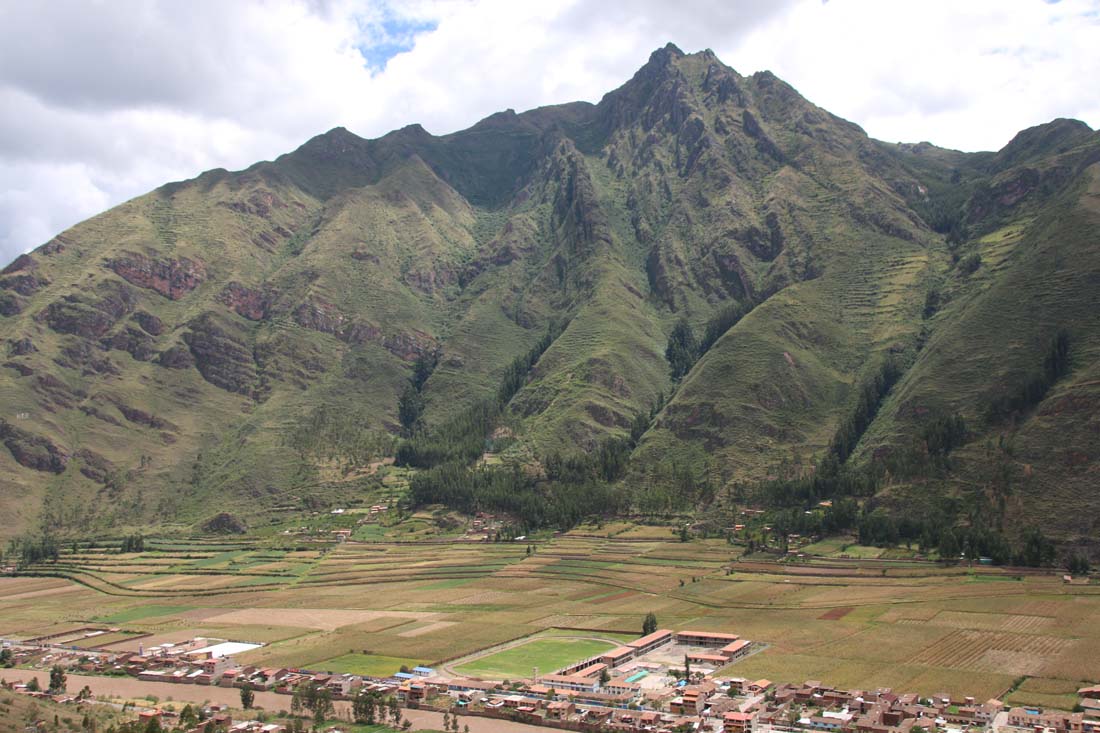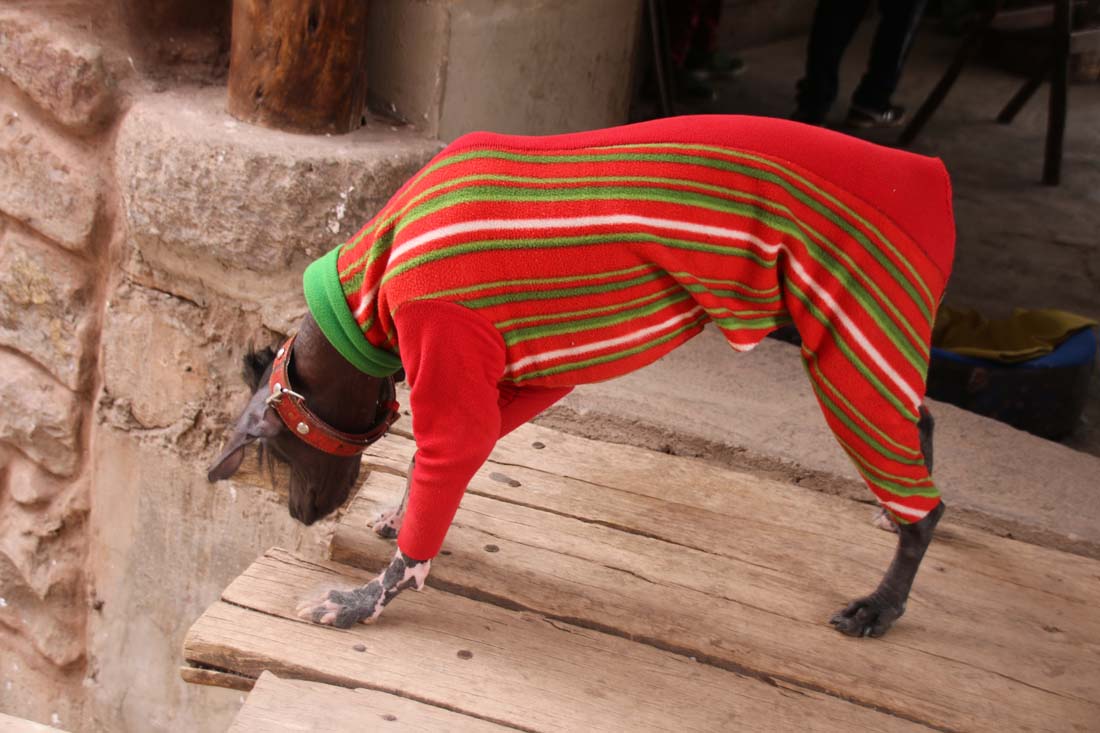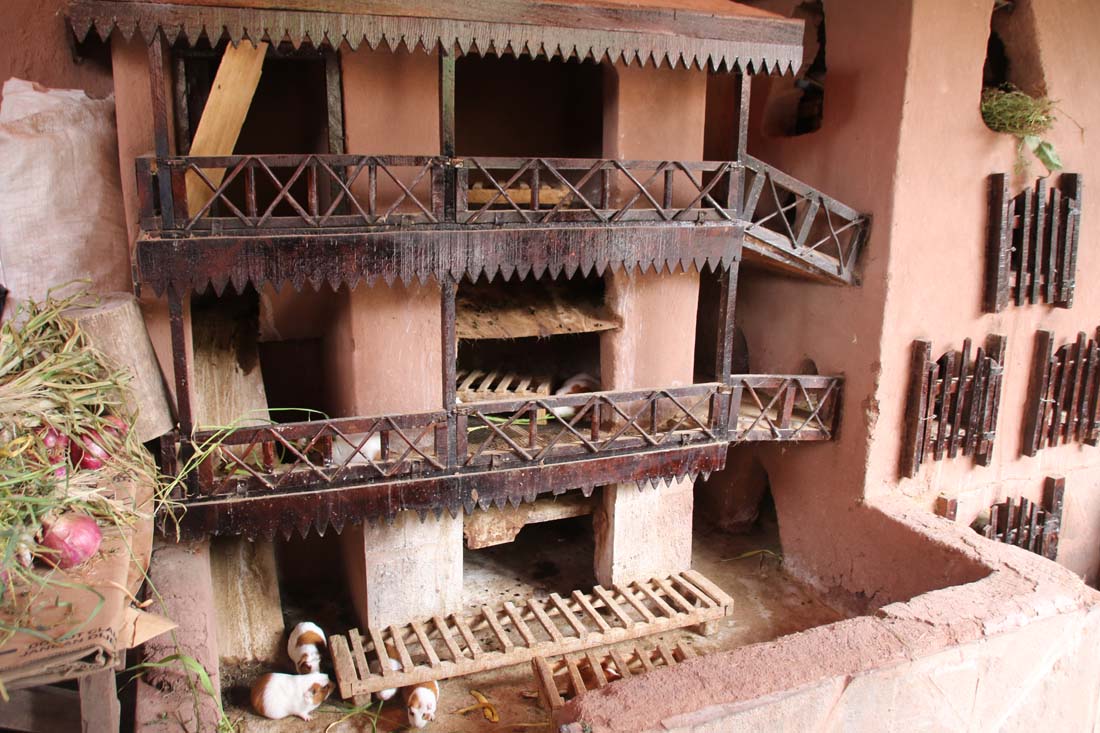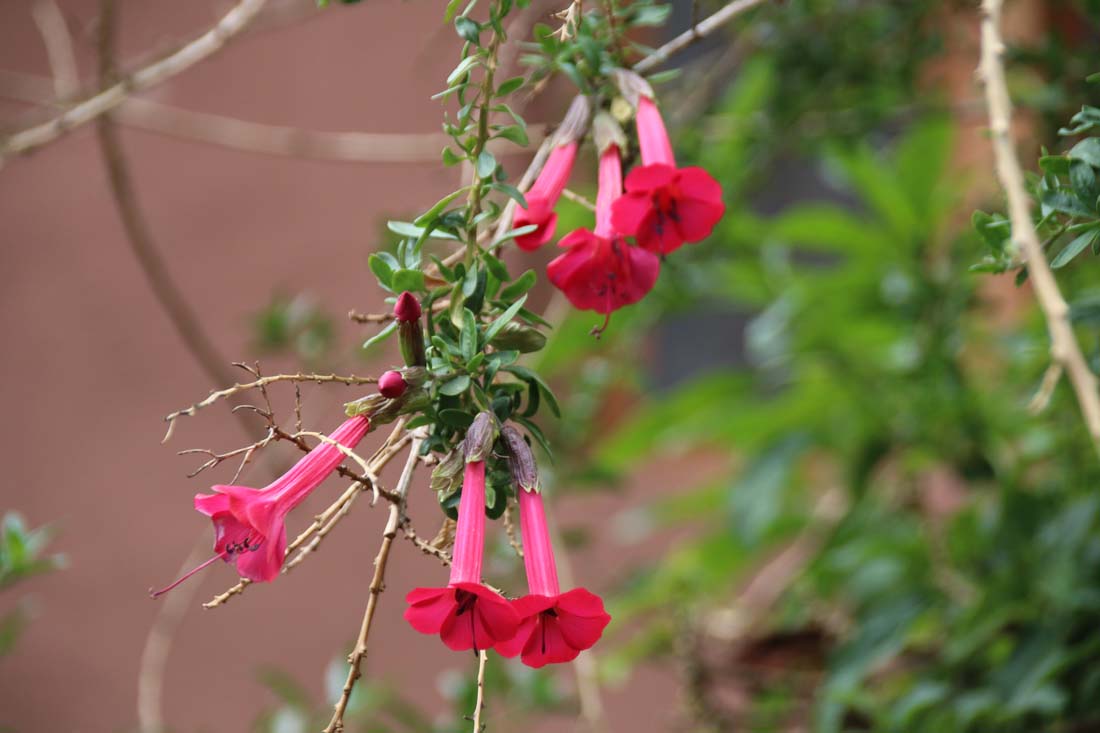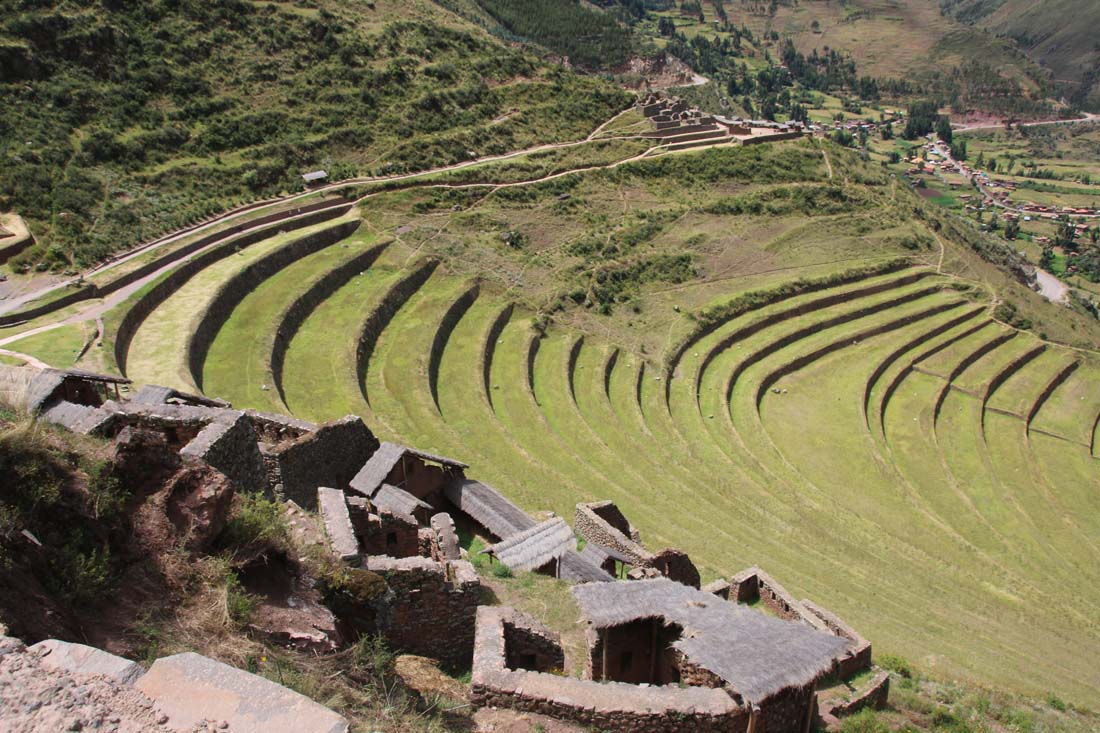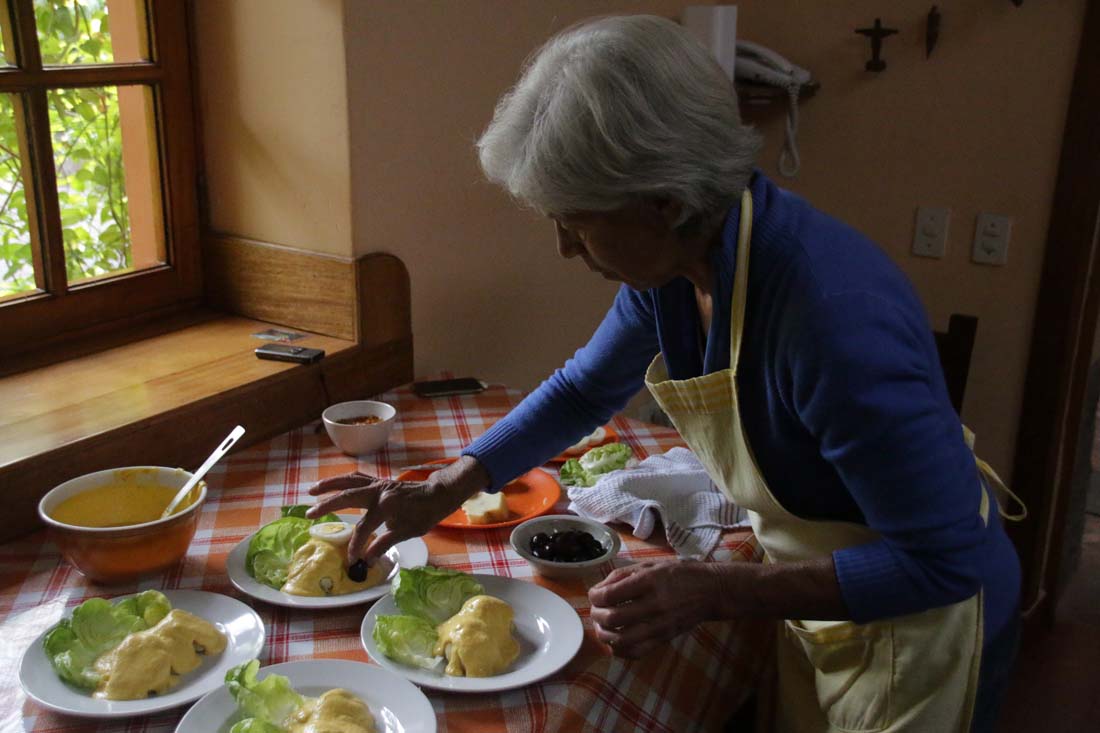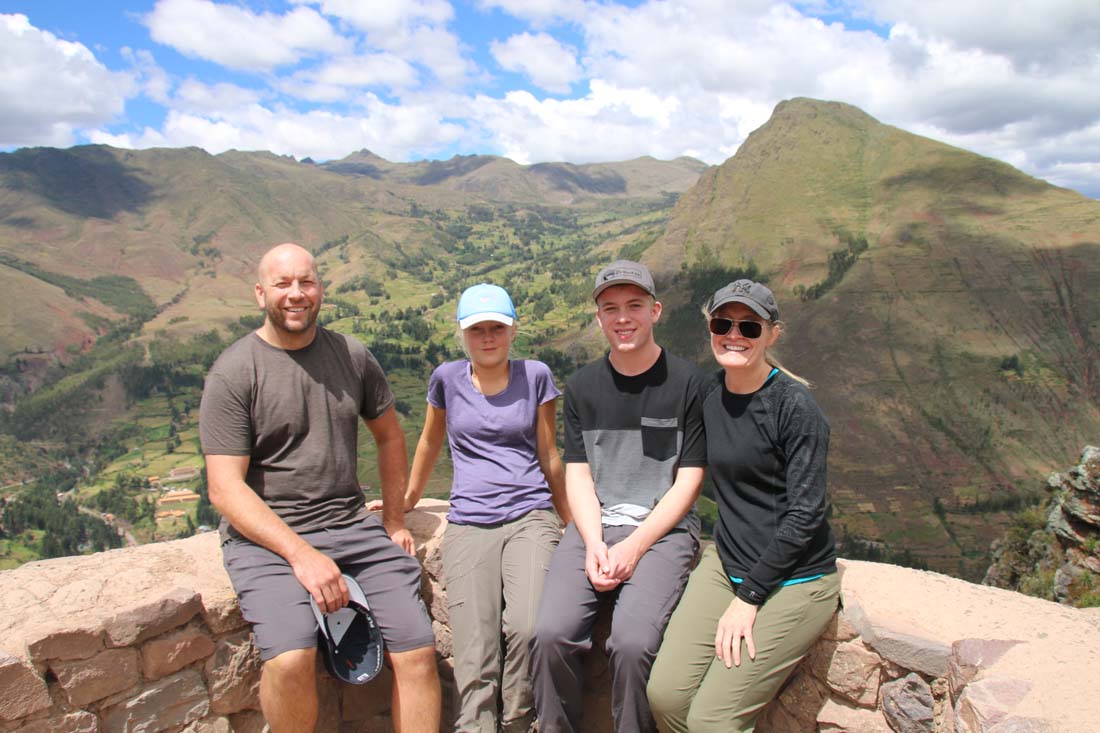 Adventuriety / Inspirietry
Adventuriety / Inspirietry
Our second day in the Cusco area started early with a 7:30 am pickup for a full day of both archaeological sights as well as cultural stops and everything in between which is going to make for a long blog. Luis was our guide again and he was bound and determined to make up for our late start the day before. He told us, “I can make a few days together seem like a month!” He was not kidding.
Puka Pukara, meaning “red fortress,” is an archaeological ruin just outside Cusco and was our first stop. Like Sacsayhuaman, there is ongoing discussion as to what purpose this site held during the Inca empire.
It is centrally located overlooking Cusco Valley, smack dab in the middle of what was the trail leading into Cusco so the prevailing thought is that it served a fortress/check point type of function. It was probably built during the 9th Inca’s reign (remember Pachacuti?) and hastily constructed. There is some argument that it was a resting point for traveling nobility or hunters.
This was our first lesson in the “double door jam” which usually leads into a complex of buildings and signifies the importance of the building or its inhabitants.
Although some consider Puka Pukara to have been hastily built, the stonework is still incredible. The is a closeup of the marks of a chisel, possibly bronze, copper or stone, used to fit the rocks together.
The walls inside the complex and looking up the valley. A little to the left and out of view is the trail that leads out of the valley. It was so peaceful at this site. It was early in the morning and we had it all to ourselves.
The trading and traveling route came up through the valley below and over the mountains in the above photo. The ruins were beautiful and interesting but paled in comparison to the quiet morning and views of the valley below and mountains above. We even watched a bird of prey dip and soar against a blue sky and mountain backdrop.
I’m going to pause here for a moment and add some color commentary because in the scope of the day it becomes important. Scott likes to understand everything and he likes to talk (which is why I thought teaching would be a natural fit). Luis (our wonderful guide) was not only passionate about his country, people and culture but was also incredibly knowledgeable and ready to teach us everything, and I mean everything and he liked to talk as much as Scott. So, he and Scott would go off on tangent after tangent after tangent. I swear the double door jamb lesson turned into talking about plaid taxis and then on to space invaders and then about mustard on camels. Seriously, at points I had no idea what they were talking about. I was surprised they both were not hypoxic from talking. Remember this was day four of our trip and we were going to bed late and getting up early and moving constantly.
Ashley (and Grant and I) were already a bit glazed over as evidenced here (and it was only 7:45 in the morning). My one cup of not so great coffee was failing me.
We needed something energizing and kid-friendly and so we stopped at Awana Kancha, a community project that both educates people and promotes Andean weaving simultaneously supporting 420 families of native people. Here we learned about llama and alpaca and got to feed them.
Llama were used as pack animals, although not so much today as horses and mules can carry more, and so grew accustomed to humans and their touch.
Alpacas are used for their fleece and for food, but these of course are pets and shorn annually for their coat.
It was fun and entertaining to feed the very demanding and expressive animals and then we moved back to the classroom.
The fibers from the animals are harvested and spun into thread which is then dyed and woven.
Dying the fibers is quite the chemistry project, but all natural with colors derived from leaves and bark and even bugs!
Little bugs that live on this cactus are used to make reds and oranges. When the bug is smashed it is deep red and then natural ingredients like lime juice or clay are added to create variations of color.
These kettles and brews made me think of Harry Potter and his “potions class.”
Fibers that are ready to be made into all kinds of beautiful creations.
It takes one month to weave a one meter by half a meter piece of fabric working 8 hours a day. It is a beautiful craft and one that is still alive in the Andes.
Multi-generational families work at Awana Kancha. Here a man uses a pedal driven lathe while he enjoys his granddaughter. Of course, there is the requisite gift shop full of the handicrafts of these communities at the exit and Luis warned us that we may be able to find better prices elsewhere (his actual words were “hold your llamas”), but there is also no entrance fee for this really cool place and so we purchased a scarf and some coffee (so good!) in the snack shop.
A display of some of the over 3,000 potato varieties that are grown in Peru, but only 300 are edible. Some potatoes are even dehydrated in the almost freezing stream beds for storage and used later in soups (the little white blobs).
Back in the car we go with a quick pit stop for a picture overlooking the Sacred Valley.
The condor, puma and snake represent the heavens, the strength of man (present) and the underworld respectively, and reference to these animals is seen everywhere in everything. For example the mountain just to the right of center and in the foreground of this photo is terraced to resemble a condor. The condor’s head is a profile view at the top of the mountain and it is looking to the left. I know, it’s a bit hard to see…
The terraces at the base of these mountains represent the snake.
Down into the Sacred Valley we drove , stopping in Pisac for empanadas at a local bakery. This Peruvian Hairless Dog lived at the restaurant and sported an awfully nice Peruvian sweater!
Behind the restaurant lived the Guinea pigs. Guinea pigs are commonly enjoyed as food in Peru, believe it or not, and live in little condos and are treated very well until they become supper.
This is Peru’s national flower, Cantua buxifolia or Qantuta.
This is the inside of the restaurant where we purchased our delicious snack. Scott is dreaming here of finishing his own clay oven.
After our empanada snack we continued on to the Pisac archaeological site or Inca Pisac. These ruins are beautiful and impressive and like other sites we had already visited, there are different opinions and ideas swirling around about the exact reason and use of the complex. It was probably built around 1440 by Pachacuti and used to defend the southern entrance to the Sacred Valley, control the trade route which connected the Inca Empire with the border of the rain forest, and protect Cusco from invaders.
The terracing is constructed on top of bedrock and uses different aggregates to control the flow of water. The complex is complete with farming, living, religious, astronomical and military areas.
The Inca were ingenious and well studied farmers. You can see the floating steps in this photo leading from one terrace to the next. These steps are multi-purpose and were placed not only to get from one terrace to the next, but to create a vortex of air resulting in changes in pressure and a 15 degree difference from the bottom of terracing to the top. In addition, the sun-warmed granite gave plants more energy to grow (think pumpkins and strawberries and black plastic).
On one of the mountain sides is a huge Inca cemetery. The Spanish invaders realized that Incas were entombed with gold and silver and so they spent a lot of effort robbing their graves. Can you see at least two human skulls in the photo? That was an unforgettable sight and one one that perked up the kids for a few minutes.
We had been on the road and tuned in since 7:30 am and it was now after our scheduled lunch break and we were all a bit tired, the kids and I anyway. We were still wandering around the Pisac ruin and Scott and Luis were on fire. They were talking nonstop and although a lot of it was interesting, it was all very in depth with multiple tangents to each fork in the conversation. Scott kept trying to, for lack of a better term, “connect the dots” between all kinds of different things. Luis would explain something and Scott would repeat it and then try to add his own reasoning. “It’s like this or that,” and Luis would reply, “No, they just do it that way because that’s the way it is.” There were a lot of conversations that went this way (and it was only 1:30 in the afternoon) and finally, maybe out of frustration, Luis said, “Stop being so logical!” So imagine three people tuned mostly out, enjoying the beautiful scenery and getting a bit tired, hot and hungry, but with that sentence focus was restored. That statement became our favorite statement of the next few days and a good way to get Scott and Luis distracted from the rabbit holes they both spent exploring. Sometimes I think we put so much effort into making connections. Making connections was drilled into the kids in elementary school, but on this day I realized that maybe some things are meant to stand alone.
Our next stop was lunch at Casa de Aida, a B&B and private dining option in Calca, and I’ll just put in a photo or two to tease you but I will tell you that the two hours we spent with Aida and her husband Kinkulla were, for all of the culture, beauty and history of the day, a definite highlight and blog worthy. We were treated like family. The kids spoke Spanish with abandon. Kinkulla is not only a talented artist, but also an engaging and enthusiastic host. He took pictures of us eating around the table while we enjoyed the scrumptious food and told Luis and our favorite driver Ronald, funny stories about all of the memorable things Scott says and we laughed until we all had tears in our eyes.
Here Aida puts her loving touch on the first course. Those are potatoes in a delicious sauce with boiled eggs, olives and lettuce. Most of the ingredients come from their beautiful gardens.
Ashley and Kinkulla toured the garden together and chatted in Spanish.
We were truly sad to leave the warm company of Aida and Kinkulla but it was only 4:00 in the afternoon and we literally had miles to go before we slept. I titled this blog “My Head is Going to Explode” because one can only absorb so much information, right? And this day was a testament to that because I was having trouble remembering anything. Beyond all of the historical and cultural knowledge I was learning, I was also listening to Luis’ family history because he was sharing, it was interesting and a good example of something that is happening right now in the Andes, at least in the area that we were spending hours driving up, down and around in. Luis told us that his grandfather was Italian and he wanted to forget about the Peruvian bloodlines in his family and focus only on the European, like most Andeans of that generation with European ancestors. It’s a bit confusing but basically the Spanish invaded, destroyed all manner of Andean religion and culture that existed and tried to stamp out any future culture or religion, like banning Quechua, the language of the Inca empire. Today, Peruvians are getting excited about their heritage and embracing it, including learning Quechua which is even taught in schools in some areas.
On to our last stop of the day (oh my gosh I was so tired)…Ollantaytambo, the royal estate of Pachacuti and probably the last stop on the way to Machu Picchu from the Sacred Valley. I will admit here for all of my readers that I was getting grumpy and my attitude was NOT GOOD. It had been a long day and I was tired of listening. I just wanted to soak in the incredible, awe inspiring beauty that surrounded me and think about the fact that I was touching stones that these crazy talented Inca had drug from across the valley, over a river and up another mountain and shaped with patience and talent and inspiration from their world of beliefs and talents. I wanted a freaking moment to soak in the fact that I was in Peru and experiencing some really cool shit and then Luis says, “Daisy you’re not paying attention. I need you to pay attention so you understand what I tell you later.” I am a good person and a sweet person until I am not, and here I drew the line. I had to tell our incredibly focused and tireless guide, “Luis, I cannot learn anything else today. I am tired and I just want to experience the beauty around me without paying attention.” Scott looked at me and mouthed, “HAVE A BETTER ATTITUDE.” I was too far gone honestly, but I put a smile on my face and tromped along behind everyone until Luis posed another question. “Is this the same as that hole?” I thought it was rhetorical and so I didn’t say anything but he kept asking the question, “Is this the same as that hole?” So I answered “No, they are different.” They were different sizes and shapes for goodness sake and I thought he wanted an answer and I was trying to participate and HAVE A BETTER ATTITUDE. So Luis replies, “Why are you arguing with me?” Oh my gosh, see where a better attitude gets you? Luis if you read this, we absolutely loved you as our guide. You are phenomenal and educated and passionate and you definitely pack a lot in! But something that I took away from this day was that just being quiet and soaking things in is as important as all of the facts.
Ollantaytambo
Standing on the steps of Ollantaytambo and looking across the valley you can see this face carved in the mountain. There are graineries on either side of the face and the military complex below and to the right (you can’t see it in the picture).
Check out that girl with the great attitude! This is the entrance to the religious area of Ollantaytambo.
Ollantaytambo was left unfinished when the Spanish invaded. This huge stone at the top is thought to be the beginning of a temple and was the site of another long discussion between Luis and Scott. They were saying the same thing about the stone but it took them a few dissertations to figure that out. I had heard a lot about the Spanish in the day and a half that we had spent with Luis and none of it was good. I had to agree that the Spanish acted horribly. I also had another thought and one that I have been thinking about since I started reading Grant’s history lessons this year and so I wondered aloud, “Were the Spanish really bad or were they just doing the conquering thing?” I have been thinking a lot about bad versus good in history, how should one historically define “bad” and where the line is drawn. I have some ideas about really bad things in history, but world history involves conquering and battling and how can it all be bad? Scott gave me the “don’t even go there with your theories right now and with our very passionate guide” and so I stopped, but I now have another thing to think about; is history about science or emotion?
We closed Ollantaytambo down, we literally got kicked out because it was so late. Did I mention that we got kicked out of Sacsayhuaman for the same reason the night before? And then it was ninety minutes back to our apartment in Cusco with an added stop to look at the Southern Cross hanging low in the sky. On the drive back we discussed politics. Peru was having a presidential election in a few days and Luis was telling us about the corruption of the politicians and the voting process. Everyone in Peru is required to vote and if you don’t vote, you get fined. The amount of the fine varies with the difficulty of voting. If, for example, you live far from a voting center then the fine is much less than that of a city dweller. The election was a big deal and everyone had been talking about it and we had seen cars driving around with balloons and pictures of candidates. The election was only the first go around because no one would win with enough of the percentage of votes to win the presidency so there was already talk of a run off election in two months. Luis wanted the candidate who would stop the mining industry and turn the focus of the country to preserving its beauty and resources and promote tourism. He told us that he first started out as a conversationalist and was passionate about building trails to encourage tourism and protect habitat. He said that he didn’t have the stomach for the corruption and manipulation of politicians to make his projects a success. He said he didn’t have the money either to bribe the politicians. Then of course the talk turned to politicians in the United States and yet again we were asked how Trump has managed to get so far.
The kids chattered happily away together as soon as our political talk ended. They were making up some kind of game and I was impressed that they still had energy to breathe and think after the day we had just experienced. We arrived back at our apartment after 7, ate scraps from the refrigerator while the kids tried to get a little schoolwork accomplished. I reflected on the day.and realized that I couldn’t remember anything, so Scott rattled off the basic outline of the day while I took notes. Obviously, I recovered my memories from the day (looking at pictures helps), because you are probably ready for this blog to be finished and it is, almost, I promise.
Quite a few years ago Boomerang Band, the band that Scott plays bass in, had a consultation with a woman who specialized in arranging music to fit the style of different bands. It was like a private workshop. She listened to them and then made suggestions. The one piece of advice that I remember Scott talking about is that songs need, “space to breathe.” In order for the music to really come alive and resonate with listeners, it must not be rushed; patience is key. Throughout this packed day, I had felt frustration because I just wanted moments to soak in what I was feeling or seeing and by the end of the day, I remembered very little. Finally (after 30 years of so), in one crazy twelve hour Sacred Valley Tour, I had one of Oprah’s “Aha! Moments.” Space is important in life, life needs “space to breathe.” If you get too busy, there is no way to relish the sights and sounds and feelings that make everyday interesting, beautiful, painful, memorable, you name it.
It’s been a long day, now off to bed with you. We’re climbing a via ferrata tomorrow!



